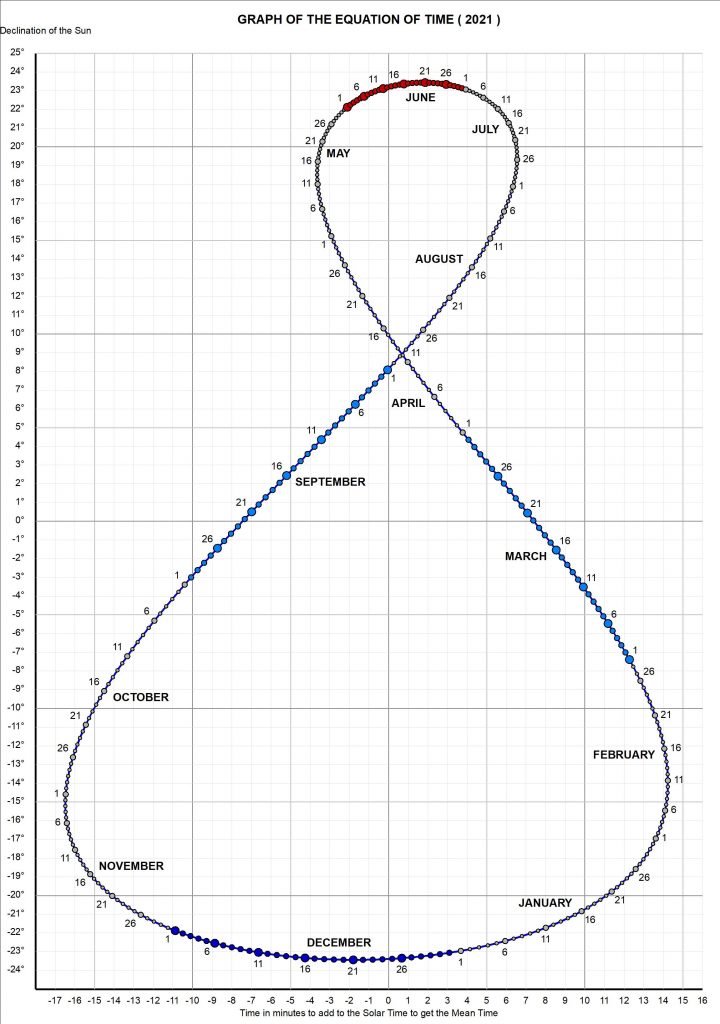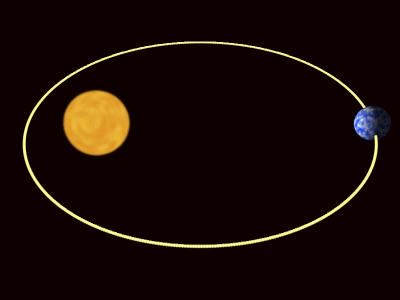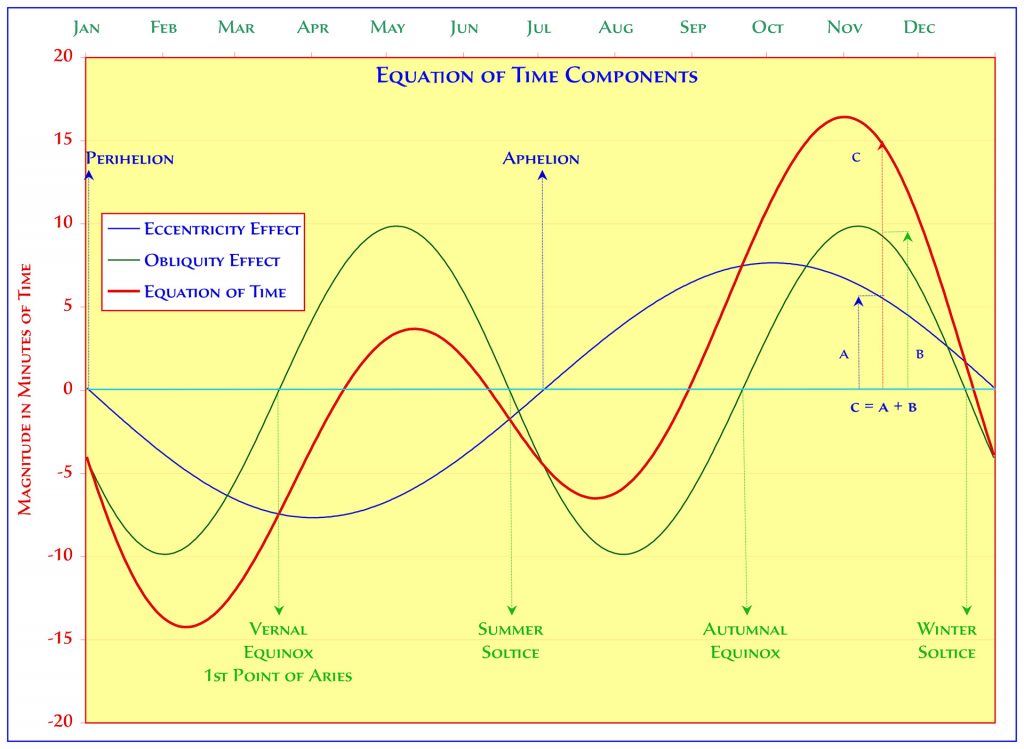Equation of Time

The time shown on sundial is Local Apparent Time (LAT) and is localised to the location that it is designed for. However, a major disadvantage is that LAT varies through out a year due to two main effects discussed below. The variations in time can be seen in the graph of Equation of Time (EOT) above.
Therefore, instead of reckoning time from an irregularly moving real Sun, time is reckoned from an imaginary mean Sun, that moves in celestial equator at a constant speed which is just equal to the average speed with which the real Sun moves in the ecliptic. Mean time is uniform time. However, Local Mean Time (LMT) is still localised to the meridian of the sundial.
Variation of Sun speed
The variation of the Sun’s apparent speed, as viewed from the Earth, are due to the effects of Obliquity and Eccentricity of the Earth’s orbit around the Sun.

The Obliquity Effect
THE OBLIQUITY EFFECT
The Earth’s rotation axis tilts at 23.43645° to the plane of the ecliptic. This results in the Sun moving not only “westwards” but except for at the equinoxes and solstices, a northward or southward motion as well. That north or south motion means that the sun travels a little more or a little less each day.

The Eccentricity Effect
THE ECCENTRICITY EFFECT
The Earth’s solar orbit is elliptic. Hence it speeds up and slows down as it is closer to or further from the Sun. The Earth is at Perihelion ( nearest to Sun ) around early January and Aphelion (furthest from Sun) around early July. That means the Earth must rotate a bit more, or a bit less, each day for a fixed location to once again point directly at the Sun. This generates an annual variation in the form of one complete sine wave.

Conversion of Solar time to Standard Time
Zonal Apparent Time (ZAT) is the local apparent time of the sundial with longitude correction. The longitude correction is the difference between the meridian of the sundial’s location and the standard time zone meridian for Malaysia.
The SARAS sundial’s time markings (Zonal Apparent Time)have taken into account the longitude difference between the meridian of location it’s designed for (100.5811 degrees) and the standard time zone meridian for Malaysia (120 degrees East).
ZAT = LAT + Longitude Difference
where the longitude difference is (120-100.581)= 19.4189 degrees
in hours; 19.4189/15 hrs= 1.2946 hrs
Therefore, in order to obtain the Malaysian Standard Time (MST), it is only necessary to add the EOT for the date to the time shown on the sundial by the shadow.
MST = ZAT+EOT